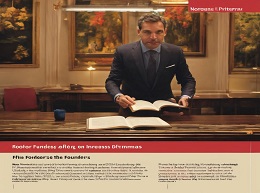Hooked

In a digital world filled with distractions, creating products that capture and retain users' attention is essential. "Hooked" by Nir Eyal delves into the psychology behind habit-forming products, offering insights and strategies for building engaging experiences that keep users coming back for more. Join us as we explore the transformative lessons of "Hooked," enriched with captivating examples and actionable insights for product designers and entrepreneurs.
Understanding the Hook Model
The Four Steps of the Hook Model
Eyal introduces the Hook Model—a framework for creating habit-forming products comprised of four key steps: Trigger, Action, Variable Reward, and Investment. He explains how each step works together to create a cycle of user engagement and habit formation.
Triggers: Sparking User Action
Triggers are external or internal cues that prompt users to take action. Eyal discusses the importance of understanding users' internal triggers—such as emotions or needs—and leveraging external triggers—such as notifications or prompts—to drive user engagement.
Actions: Facilitating User Behavior
Actions are the behaviors that users take in response to triggers. Eyal explores the role of simplicity, friction reduction, and behavioral design in facilitating user actions and making it easier for users to engage with products.
Variable Rewards: Sustaining Engagement
Variable rewards are the unpredictable outcomes that users receive as a result of their actions. Eyal examines the psychology of variable rewards and explains how they create a sense of anticipation and pleasure, driving continued engagement with products.
Investment: Increasing User Commitment
Investment refers to the effort or resources that users put into a product, increasing their commitment and likelihood of returning. Eyal explores strategies for encouraging user investment, such as personalization, social integration, and progress tracking.
Applying the Hook Model in Practice
Case Study: Instagram
Eyal analyzes Instagram's use of the Hook Model to create a habit-forming experience for users. He examines how Instagram leverages triggers like push notifications, actions like scrolling and liking, variable rewards like new content and social validation, and investments like profile customization to keep users engaged.
Case Study: Slack
Eyal explores how Slack applies the Hook Model to create a habit-forming workplace communication platform. He discusses how Slack uses triggers like notifications and integrations, actions like messaging and collaboration, variable rewards like information updates and social interaction, and investments like team setup and customization to drive user engagement.
Ethical Considerations and Responsibility
Balancing Engagement and Well-Being
Eyal acknowledges the ethical implications of designing habit-forming products and emphasizes the importance of balancing user engagement with user well-being. He encourages product designers to consider the long-term impact of their designs on users' lives and prioritize ethical considerations in product development.
Promoting User Empowerment
Eyal advocates for empowering users to make conscious choices about their engagement with technology. He suggests implementing features like user controls, notifications settings, and usage tracking to give users more control over their digital experiences.
Overcoming Challenges and Risks
Addressing Addiction and Overuse
Eyal acknowledges the potential for addiction and overuse associated with habit-forming products and discusses strategies for mitigating these risks. He emphasizes the importance of responsible design practices and ongoing monitoring of user behavior to identify and address potential issues.
Navigating Regulatory and Legal Concerns
Eyal explores the regulatory and legal considerations associated with designing habit-forming products, such as privacy regulations and consumer protection laws. He encourages product designers to stay informed about relevant regulations and prioritize compliance in their designs.
Best Practices for Product Design
User-Centric Design
Prioritize user needs, preferences, and well-being in product design, focusing on creating experiences that add value and enhance users' lives.
Iterative Testing and Feedback
Iteratively test product designs with real users and gather feedback to identify areas for improvement and refine the user experience over time.
Ethical Design Principles
Incorporate ethical design principles into product development, considering the potential impact of designs on users' mental health, privacy, and well-being.
Conclusion: Creating Habit-Forming Experiences
"Hooked" by Nir Eyal offers a comprehensive framework for understanding the psychology of user engagement and creating habit-forming products. By applying the principles of the Hook Model responsibly and ethically, product designers and entrepreneurs can create engaging experiences that enrich users' lives and drive long-term success.
As we navigate the landscape of digital product design, let "Hooked" be our guide—a roadmap for creating experiences that captivate and delight users, while promoting their well-being and empowerment.
Ready to dive into the psychology of engagement? Explore 'Hooked' and unlock the secrets to building habit-forming products that keep users coming back for more.








